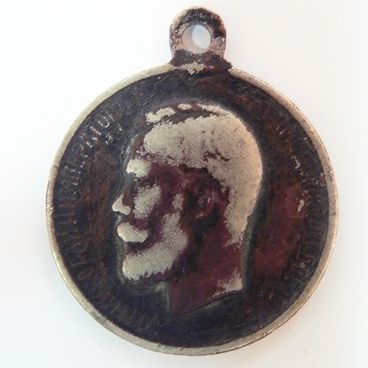These Beranger-system desktop scales are one of the exhibits in the collection of the Kotlas Museum, and can hold up to 15 kilograms. They were produced by Polish factory Peysakh Gastman, and made in the second half of the XIX century. On the centre of the scales’ facade is a monogram in Russian: PG - Peysakh Gastman.
Table scales
Время создания
second half of the 19th century
Место создания
Warshaw, Poland
Размер
65x24 cm
Техника
art casting
Коллекция
Выставка
#1
Unknown author
Table scales
#2
#4
Table scales
#3
These scales belong to the Beranger-system table scale type, popularly called “geese” or “ducks” because of the characteristic shape of the balance indicators. Such scales became popular in the second half of the 19th century and were widely used for over a century. Before the revolution, these scales were supplied to the trading establishments of the Russian Empire mainly from Poland and Odessa. Such scales were distinguished by the artistic design of the case - they were decorated with figures of dragons, griffins, and harpies. One of the most common decorations was mermaids.
The two-bowl balance system for scales, which did not require great precision, was invented by the French mathematician, astronomer, and physicist Gilles de Roberval (1602-1675). Later they were named after him. The scales were based on a rocking mechanism, but Roberval significantly improved their design. It was he who first came up with the idea to place a balance beam under the scales, and not above them. The bowls rested on two rods included in a system of interconnected levers. During oscillations during weighing, the system of levers had the shape of a parallelogram, and in equilibrium it acquired the shape of a rectangle. At the same time, the readings of the scales did not depend on where the load was located in the bowl.
Around 1850, the French inventor and owner of his own scales factory, Joseph Beranger (1802-1870), proposed adding small additional levers to the design of his predecessor and compatriot in place of the struts under the main double beam. Thanks to this, it was possible to reduce the action of external forces and friction, and, therefore, increase the sensitivity of the device. It was only in the 20th century that an innovative scales design with bowls over the rocker arm system was launched into mass production. These scales could long be found on the counters of Soviet stores.
The two-bowl balance system for scales, which did not require great precision, was invented by the French mathematician, astronomer, and physicist Gilles de Roberval (1602-1675). Later they were named after him. The scales were based on a rocking mechanism, but Roberval significantly improved their design. It was he who first came up with the idea to place a balance beam under the scales, and not above them. The bowls rested on two rods included in a system of interconnected levers. During oscillations during weighing, the system of levers had the shape of a parallelogram, and in equilibrium it acquired the shape of a rectangle. At the same time, the readings of the scales did not depend on where the load was located in the bowl.
Around 1850, the French inventor and owner of his own scales factory, Joseph Beranger (1802-1870), proposed adding small additional levers to the design of his predecessor and compatriot in place of the struts under the main double beam. Thanks to this, it was possible to reduce the action of external forces and friction, and, therefore, increase the sensitivity of the device. It was only in the 20th century that an innovative scales design with bowls over the rocker arm system was launched into mass production. These scales could long be found on the counters of Soviet stores.
#5
MUK "Kotlas Museum of Local Lore"
читать дальшескрыть
00:00
00:00
1x
Table scales
Время создания
second half of the 19th century
Место создания
Warshaw, Poland
Размер
65x24 cm
Техника
art casting
Коллекция
Выставка
Открыть в приложении
Поделиться





